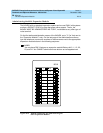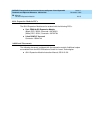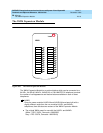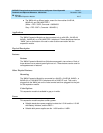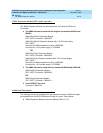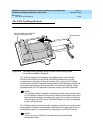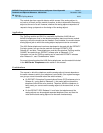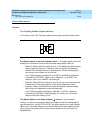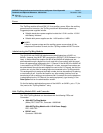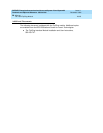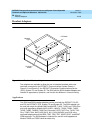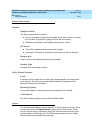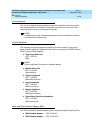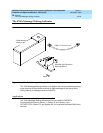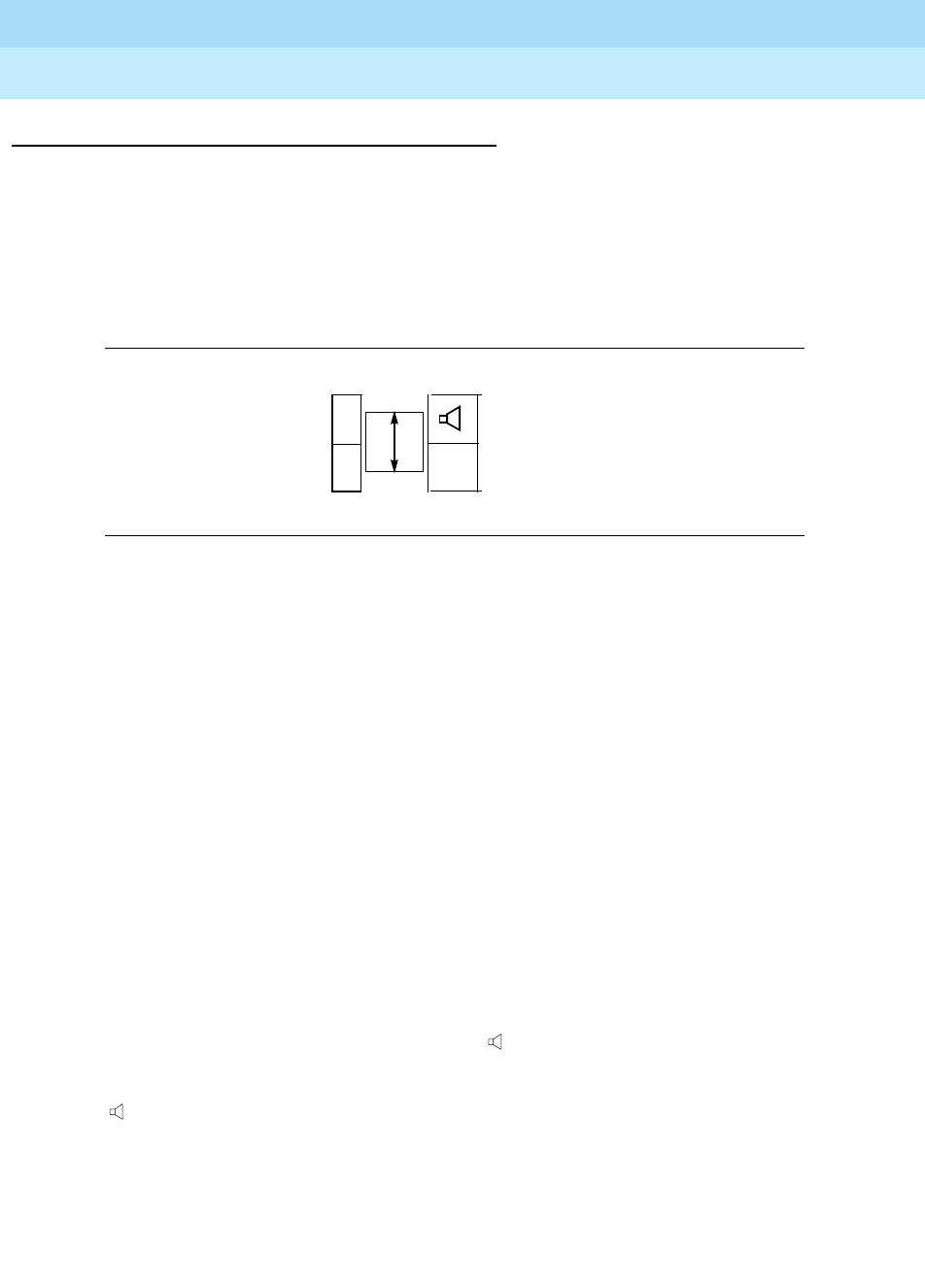
DEFINITYEnterpriseCommunicationsServerandSystem75andSystem85
Terminals and Adjuncts Reference
555-015-201
Issue 11
December 1999
Adjuncts
20-22The 100A Tip/Ring Module
20
Physical Description
Features
The Tip/Ring Module Option Switches
On the back of the 100A Tip/Ring module are two option switches shown below.
Figure 20-9. The Two Option Switches on the Tip/Ring Module
TheOptionSwitchontheLeft,Labeled1and2—Theoptionswitchontheleft
allows you to choose the line that the connected analog adjunct will use.
— WhentheOptionswitchontheleftissetto1, the telephone and the Analog
adjunct
share the same line
. Therefore, only one device, the telephone
handset OR the telephone built-in speakerphone OR the Analog adjunct
can transmit on the same line at one time.
If the Tip/Ring device is installed on a 6416D+M or 6424D+M telephone
connected to a DEFINITY switch prior to Release 8.1, you MUST
use
Setting 1; that is, you CANNOT use Setting 2.
— WhentheOptionswitchontheleftissetto2, you can use a second line for
transmission on the analog adjunct, a line that is independent of the
telephone. When the second line is used, the telephone and the analog
adjunct can use independent lines
simultaneously
.
If the Tip/Ring module is installed on a 6416D+ or 6424D+ telephone
connected to a DEFINITY switch Release 8.1 or later, you can set the
switchonthelefttoSetting1 or 2.
The Option Switch on the Right, Labeled and
FAX — If you selected
Setting 1 on the left option switch (that is, the telephone and the analog adjunct
use the same line), you MUST ALSO SET the option switch on the right, labeled
and
FAX. This switch allows you to choose whether the analog adjunct, when
active, will be interrupted when you pick up the handset or turn on the built-in
speakerphone.
2
1
FAX



